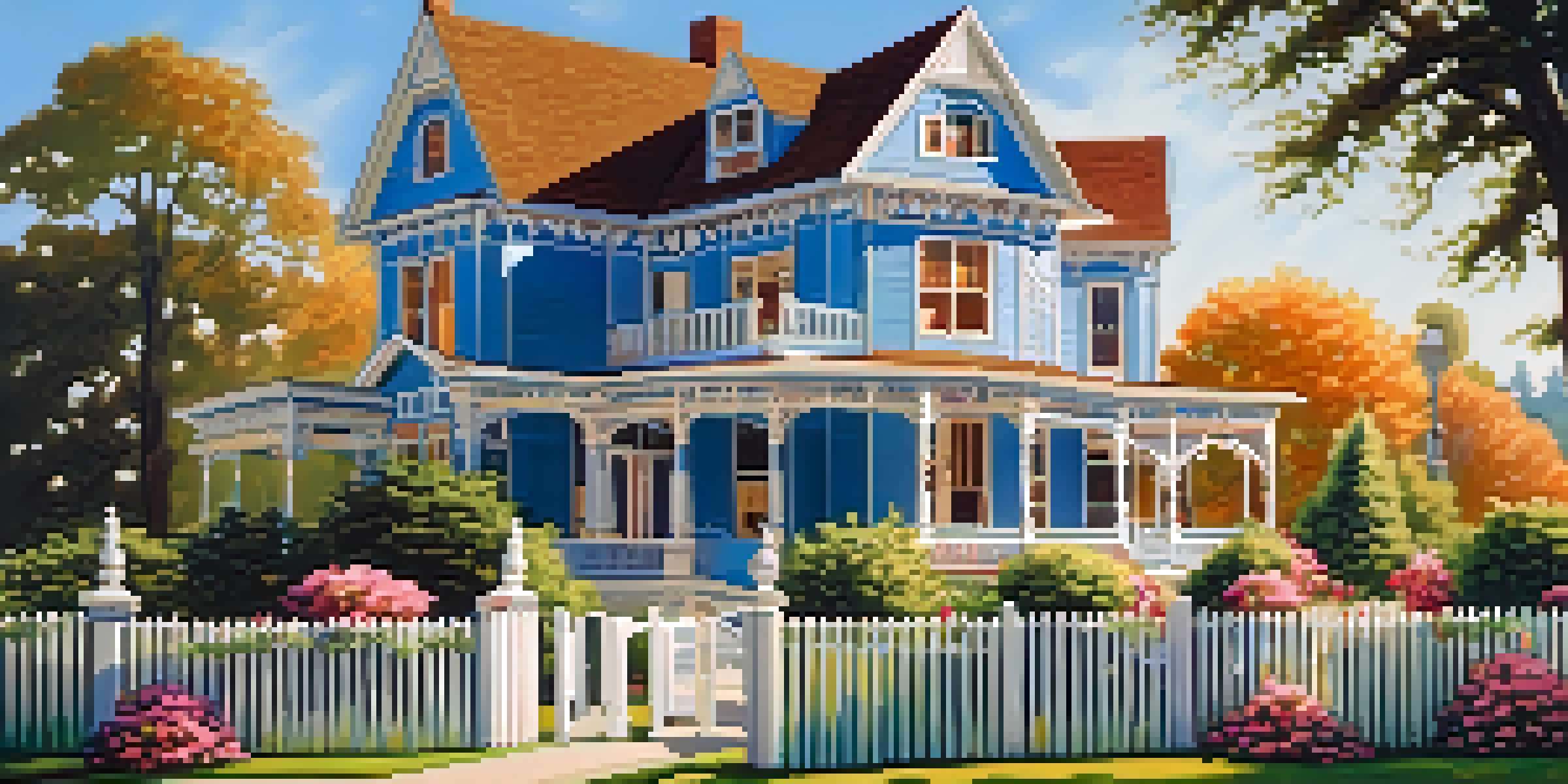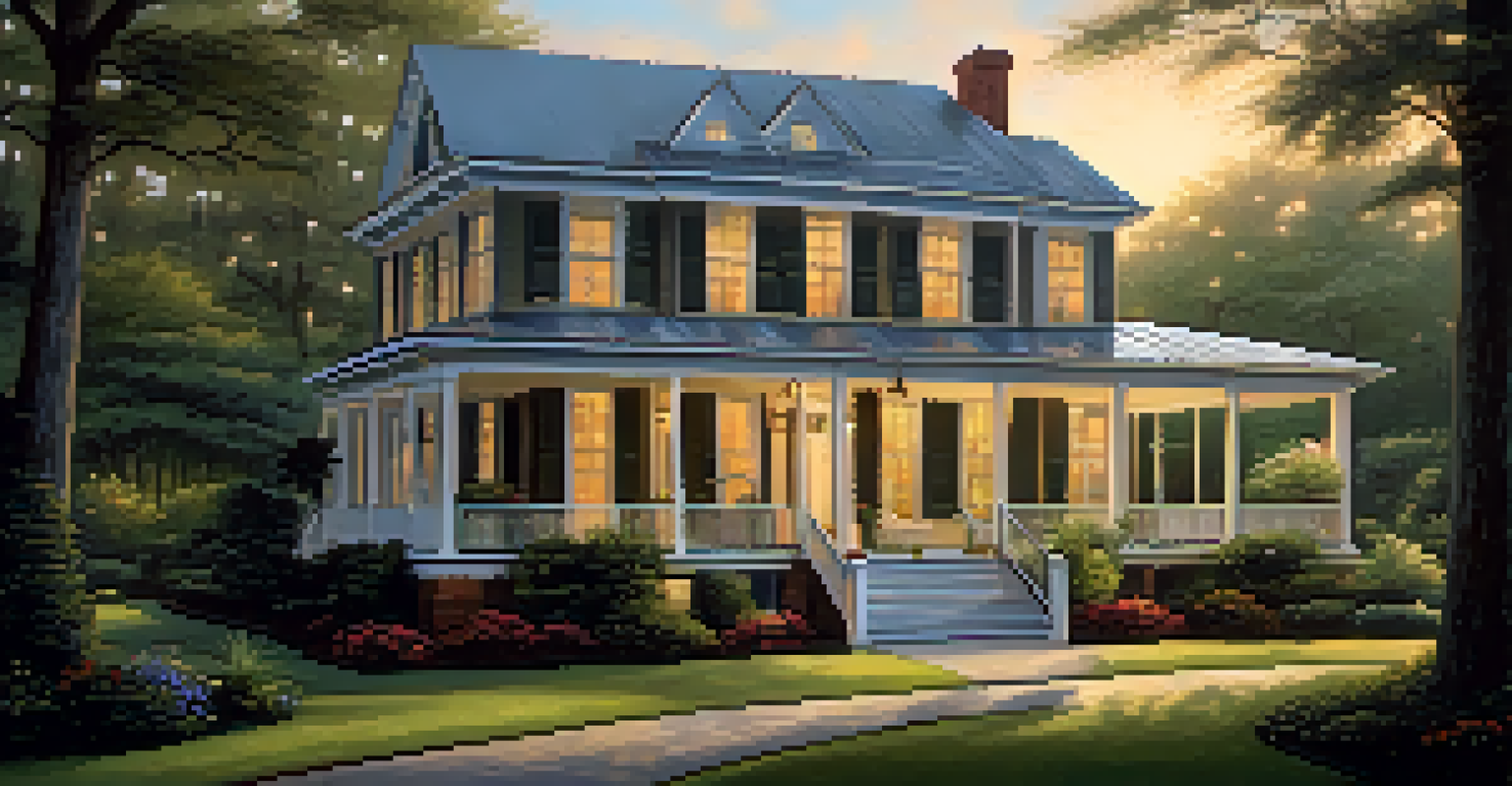The Role of Architectural Style in Curb Appeal

What is Curb Appeal and Why Does It Matter?
Curb appeal refers to the attractiveness of a property as viewed from the street. It's the first impression potential buyers or visitors get, and it can significantly influence their perception of the home. A well-designed exterior can enhance a home's value, making it more appealing on the real estate market.
First impressions matter. Your exterior sets the tone for your entire home.
Imagine driving through a neighborhood and spotting a house that stands out due to its vibrant colors and unique design. That’s curb appeal at work! It sets the tone for the entire property and invites people to explore further.
In today’s competitive housing market, having a strong curb appeal can be the difference between a quick sale and a property that lingers. Therefore, understanding how architectural style plays into this concept is crucial for homeowners.
Different Architectural Styles and Their Characteristics
Architectural style encompasses various design elements like shape, materials, and color that define a building's look. Popular styles include Colonial, Craftsman, Modern, and Victorian, each offering distinct features and aesthetics. For instance, Colonial homes often boast symmetry and classic brick facades, while Craftsman homes emphasize natural materials and handcrafted details.

Each style has a personality of its own, influencing how a home fits within its environment. A Victorian home might have intricate woodwork and vibrant colors, while a Modern home could present a sleek, minimalist look with large glass windows.
Curb Appeal Shapes First Impressions
Curb appeal significantly influences how potential buyers and visitors perceive a home from the street.
Understanding these styles helps homeowners choose features that complement their property and enhance its curb appeal. It’s not just about personal taste; it’s also about what resonates well with the neighborhood.
The Influence of Architectural Style on Perception
The architectural style of a home can evoke specific feelings and reactions from onlookers. For example, a rustic farmhouse may convey warmth and nostalgia, while a contemporary structure might suggest innovation and sophistication. This emotional connection can make a lasting impression.
Architecture is the art of how to waste space.
Think about how you feel when you see a charming cottage with flowering gardens compared to a stark, industrial building. The former invites you in with its coziness, while the latter may feel imposing.
Thus, selecting the right architectural style is not just about aesthetics; it’s about creating a welcoming atmosphere that resonates with potential buyers and passersby alike.
Color Schemes and Their Architectural Importance
Color plays a vital role in defining a home's architectural style and enhancing its curb appeal. Different styles often come with traditional color palettes that can either elevate or detract from the overall look. For example, a Victorian home may shine with rich, bold colors, while a Modern home may benefit from neutral tones.
Choosing the right colors can highlight architectural details and create visual harmony. Imagine a Craftsman home adorned with earthy greens and browns, seamlessly blending with its natural surroundings.
Architectural Styles Define Aesthetics
Different architectural styles, like Colonial and Craftsman, each bring unique characteristics that affect a home's visual appeal.
In essence, color isn’t just a cosmetic choice; it’s a fundamental element that can accentuate the beauty of a home’s architectural style, making it more appealing to the eye.
Landscaping: Complementing Architectural Style
Landscaping serves as the finishing touch that can either enhance or detract from a home's architectural style. Thoughtful landscaping can create a cohesive look, drawing attention to the unique features of a house. For instance, a Mediterranean-style home might benefit from lush, vibrant gardens and terracotta pots.
On the other hand, a minimalist home design may look best with clean lines and simple plantings, allowing the architecture to take center stage. Landscaping should complement the style rather than compete with it, creating an inviting atmosphere.
Ultimately, the right landscaping can transform a home’s curb appeal, making it feel more welcoming and connected to its architectural roots.
The Role of Front Porches and Entries
The front porch and entryway are crucial elements of curb appeal that reflect the architectural style of a home. A grand entryway can signal elegance and sophistication, while a cozy porch might suggest warmth and friendliness. These areas serve as the transition from the exterior to the interior, inviting guests to step inside.
Consider a classic Southern home with a large wraparound porch, perfect for enjoying leisurely afternoons. This architectural feature not only enhances curb appeal but also adds functional outdoor living space.
Color and Landscaping Enhance Appeal
Thoughtful color choices and landscaping can complement a home's architectural style, enhancing its overall curb appeal.
Incorporating well-designed porches and entries ensures that the home feels both inviting and stylish, reinforcing its architectural character.
Maintaining Architectural Harmony in Renovations
When renovating or updating a home, maintaining architectural harmony is essential for preserving its curb appeal. Homeowners should consider how new additions or changes will blend with the existing style. For instance, adding modern windows to a historic home without careful consideration can disrupt its character.
It's like wearing an outfit that doesn’t match your personal style; it doesn’t feel right. The same goes for homes; every element should work together to create a cohesive look.

By thoughtfully planning renovations to align with the home’s architectural style, homeowners can enhance curb appeal and maintain the property’s value.